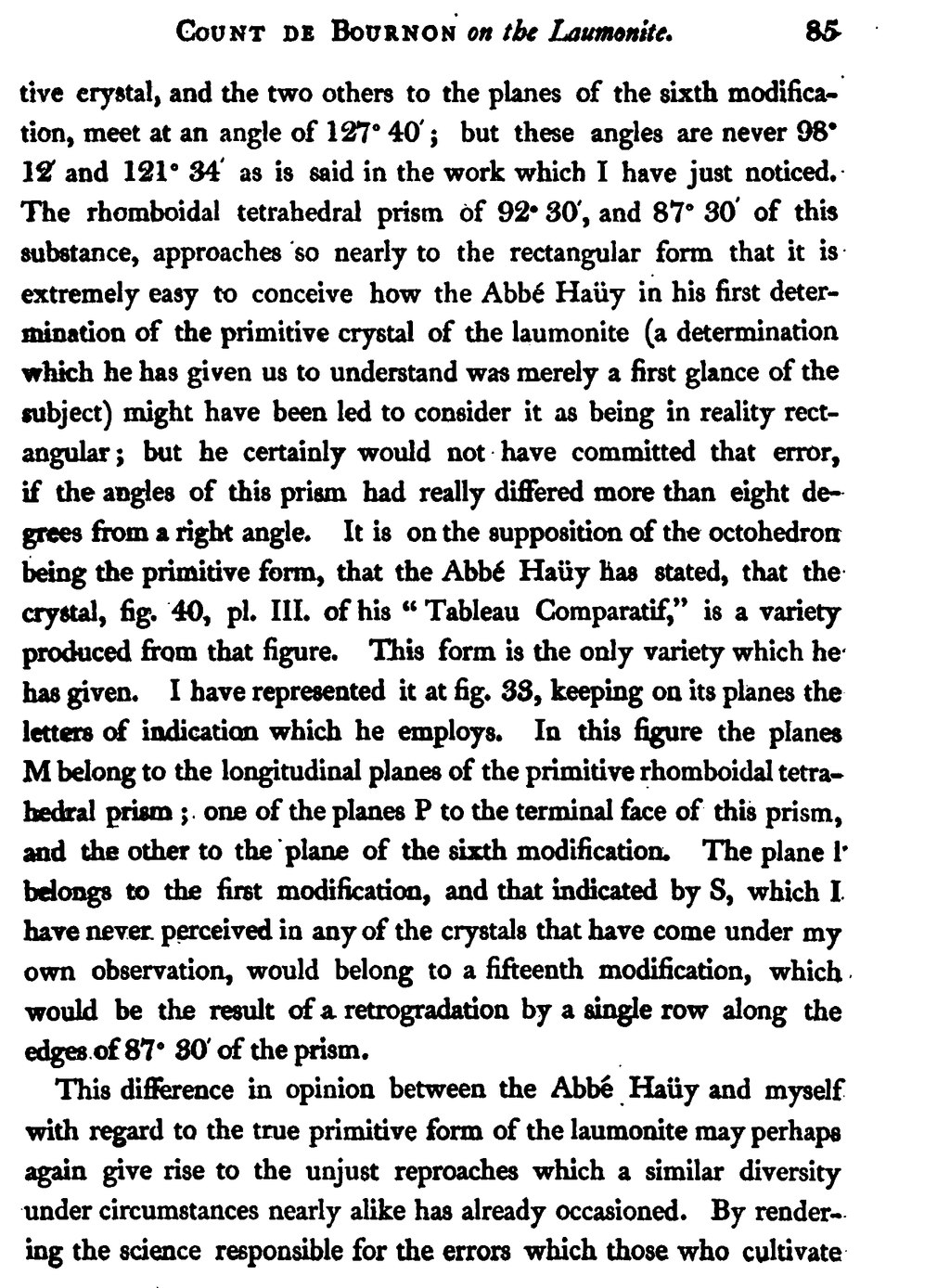crystal, and the two others to the planes of the sixth modification, meet at an angle of 127° 40′; but these angles are never 98° 12′ and 121° 34′ as is said in the work which I have just noticed. The rhomboidal tetrahedral prism of 92• 30′, and 87° 30′ of this substance, approaches so nearly to the rectangular form that it is extremely easy to conceive how the Abbé Haiiy in his first determination of the primitive crystal of the laumonite (a determination which he has given us to understand was merely a first glance of the subject) might have been led to consider it as being in reality rectangular; but he certainly would not have committed that error, if the angles of this prism had really differed more than eight degrees from a right angle. It is on the supposition of the octahedron being the primitive form, that the Abbé Haiiy has stated, that the crystal, fig. 40, pl. III. of his “ Tableau Comparatif,” is a variety produced from that figure. This form is the only variety which he has given. I have represented it at fig. 38, keeping on its planes the letters of indication which he employs. In this figure the planes M belong to the longitudinal planes of the primitive rhomboidal tetrahedral prism; one of the planes P to the terminal face of this prism, and the other to the plane of the sixth modification; The plane I belongs to the first modification, and that indicated by S, which I have never perceived in any of the crystals that have come under my own observation, would belong to a fifteenth modification, which would be the result of a retrogradation by a single row along the edges of 87° 30′ of the prism.
This difference in opinion between the Abbé Haüy and myself with regard to the true primitive form of the laumonite may perhaps again give rise to the unjust reproaches which a similar diversity under circumstances nearly alike has already occasioned. By rendering the science responsible for the errors which those who cultivate

